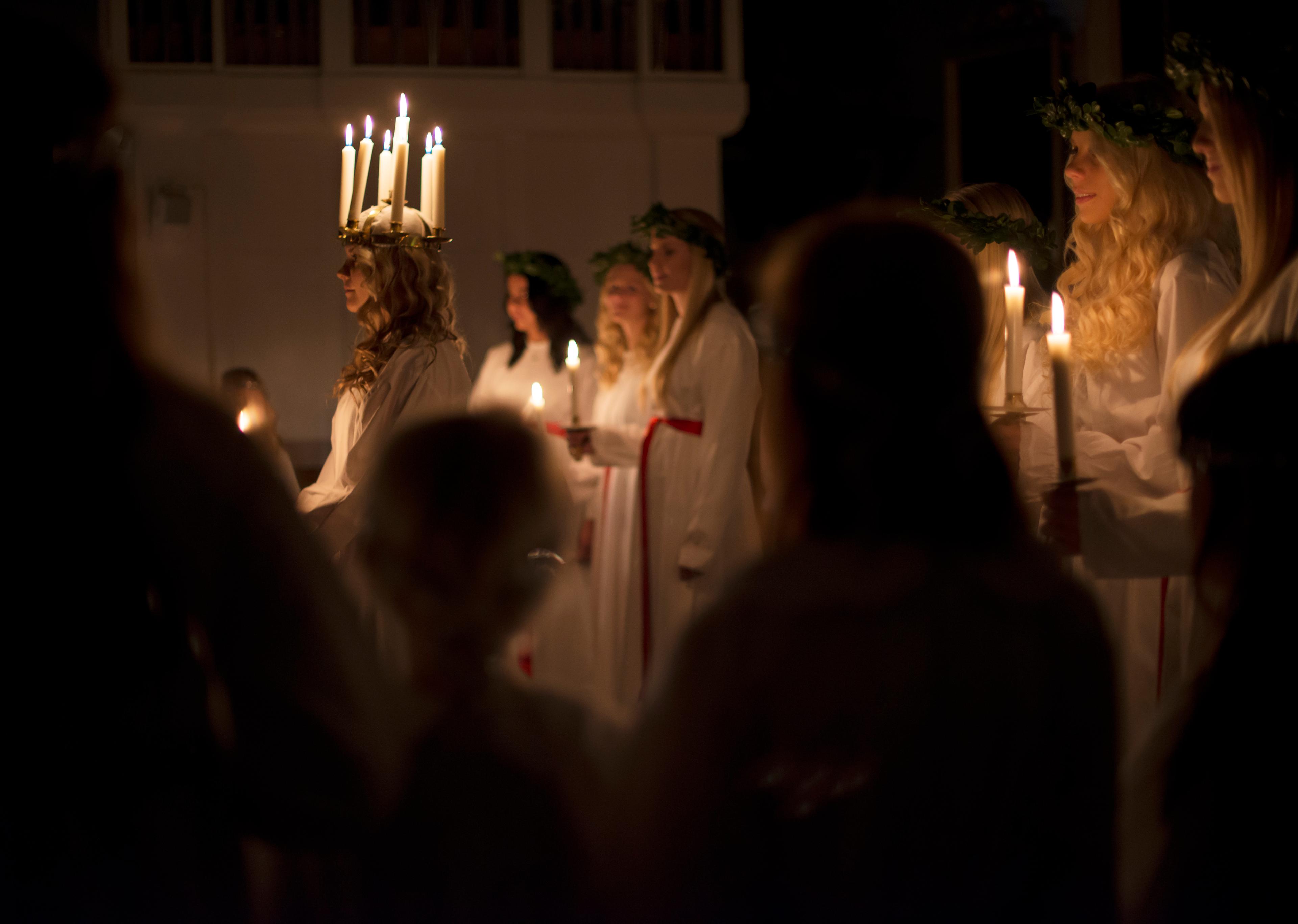The Lucia tradition
What does midwinter have to do with white gowns and candles? It’s Swedish Lucia!
The annual celebration of Lucia in Sweden involves girls and boys clad in white full-length gowns singing songs together. The candlelit Lucia procession on 13 December is perhaps one of the more exotic-looking Swedish customs.
Many now replace the real candles with battery-powered ones, but there is still a special atmosphere when the lights are dimmed and the sound of the children singing grows as they enter from an adjacent room.
Tradition has it that Lucia is to wear ‘light in her hair’, which in practice means a crown of electric candles in a wreath on her head. Each of her handmaidens carries a candle, too. Parents gather in the dark with their mobile cameras at the ready.
The star boys, who are dressed in white gowns like the handmaidens, carry stars on sticks and have tall paper cones on their heads. The Christmas elves bring up the rear, carrying small lanterns.
Lucia − the bearer of light
Alongside Midsummer, the Lucia celebrations represent one of the foremost cultural traditions in Sweden, with their clear reference to life in the peasant communities of old: darkness and light, cold and warmth.
Lucia is an ancient mythical figure with an abiding role as a bearer of light in the dark Swedish winters.
The many Lucia songs all have the same theme:
The night treads heavily
around yards and dwellings
In places unreached by sun,
the shadows brood
Into our dark house she comes,
bearing lighted candles,
Saint Lucia, Saint Lucia.
All Swedes know the standard Lucia song by heart, and everyone can sing it, in or out of tune. On the morning of Lucia Day, the radio plays some rather more expert renderings, by school choirs or the like.
The Lucia celebrations also include gingerbread biscuits and sweet, saffron-flavoured buns (lussekatter) shaped like curled-up cats and with raisin eyes. You eat them with glögg, Swedish mulled wine, or coffee.
Swedish Lucia – the origins
The Lucia tradition can be traced back both to the martyr St Lucia of Syracuse (died in 304) and to the Swedish legend of Lucia as Adam’s first wife. It is said that she consorted with the Devil and that her children were invisible infernals.
The name may be associated with both lux (light) and Lucifer (Satan), and its origins are difficult to determine.
The present Swedish Lucia custom appears to be a blend of traditions. In the old almanac, Lucia Night was the longest of the year. It was a dangerous night when supernatural beings were abroad and all animals could speak. By morning, the livestock needed extra feed. People, too, needed extra nourishment and were urged to eat seven or nine hearty breakfasts. The last person to rise that morning was nicknamed ‘Lusse the Louse’ and often given a playful beating round the legs with birch twigs. In agrarian Sweden, young people used to dress up as Lucia figures (lussegubbar) that night and wander from house to house singing songs and scrounging for food and schnapps.
The first recorded appearance of a white-clad Lucia in Sweden was in a country house in 1764. The custom did not become universally popular in Swedish society until the 1900s, when schools and local associations in particular began promoting it. The old lussegubbar custom virtually disappeared with urban migration, and white-clad Lucias with their singing processions were considered a more acceptable, controlled form of celebration than the youthful carousals of the past. Stockholm proclaimed its first Lucia in 1927. The custom whereby Lucia serves coffee and buns (lussekatter) dates back to the 1880s.

